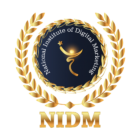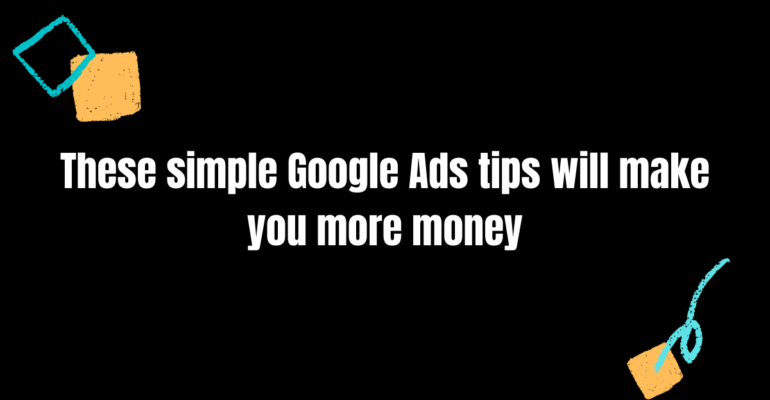These simple Google Ads tips will make you more money
August 30, 2021 2021-08-30 6:43These simple Google Ads tips will make you more money
There are many elements to a successful paid search campaign. These are eight ways you can optimize your PPC campaigns to maximize your revenue.
One platform. All Your PPC Campaigns.
You can easily manage, optimize, and automate your PPC campaign while remaining in total control. Rule-based automation allows you to work smarter and more efficiently while maximizing your revenue and conversions.
There is no better way to find potential customers than if they search Google or Bing; they will tell you what they are looking for. However, because you pay for every click you get from your ads, a poorly managed PPC campaign can cost more (sometimes a lot more) than the revenue it brings in.
While your target audience and messaging may be unique to your company, some general tactics can work in PPC campaigns regardless of industry.
Although there is no magic bullet for a successful and healthy PPC campaign, there are many things you can do to optimize your results.
These are eight essential (but often overlooked!) elements of optimizing PPC campaigns. However, if you incorporate these elements into your paid searches efforts, you will see a significant improvement in your business’s performance and increase your revenue.
1. Your Landing Page should be relevant
This is a crucial aspect of paid search.
It is easy to lose yourself in paid search platforms. You can tweak bids, test ad copy, and channel all your energy into them.
However, something more critical happens once a user clicks on an advertisement on the platform you are so focused on: They go to your website!
PPC marketing has one ultimate goal: to make a sale.
A successful PPC campaign drives qualified leads to land pages, but that’s just half of the winning.
The landing page must then convert the prospect into a paying client.
It would help if you optimized your landing pages for PPC conversions by making the message of your ads align with your landing page message. Maintaining consistency between your keywords, ad copy, and landing pages should improve your click-through and conversion rates while lowering your CPC.
The ideal outcome is that you make more money and maximize your budget.
Copy the same copy points on your landing page as in your ad.
You know that your customers are interested in your offer and message in your advertisement. This allows you to increase conversions by including the same message or CTA on your landing pages.
This simple rule will allow you to create more engaging ads that help customers understand your value and increase conversions.
2. Optimize Negative Keywords
One of the most powerful tools at your disposal to ensure the integrity of your Google Ads and Microsoft Ads campaigns is to utilize negative keywords.
Both platforms allow you to specify which keywords aren’t a good fit for your product or service.
Google will ask you what product it is. Not doing this, your ads will not appear on keywords searches unrelated to the customers you desire. Let’s take, for example, an apartment management company with several off-campus student apartments.
These apartments are not for families but students.
You can filter out terms such as “family” and “cheap” to ensure that they receive only qualified traffic.
It’s just as important to tell Google about your product or service Not Tell them as much as you can. These are.
Negative keywords can be added at the campaign level. However, you can also fine-tune your focus by adding unique keywords specific to ad groups.
3. Use the right keyword match-types
PPC advertising is a direct attribution marketing channel, and Google Ads relies on user intent through keywords.
Ads are displayed to people who search for something on Google based on the search term’s relevancy.
It is essential to know the keywords and modifiers that you use in your PPC campaigns.
There are four types of keyword matches, meaning four possible ways you can “tell” Google and Bing to handle the keywords you bid on.
•Broad: This is the most extensive search you can make and will match any word (including synonyms) that consists of the target keyword.
•Broad Match Modified: This match type allows you to cast the second-largest net. Broad Match allows your ad for any keyword within the phrase you are bidding on. Broad Match Modified, however, tells Google that it must include all terms in the search query in any order.
•Phrase Match: This modifier will only show your ad if searchers use the exact phrase that you have specified. All keywords must be included in the query in the same order as you entered them.
•The Perfect MatchThis keyword modifier is similar in function to phrase match. Traditionally, your ads would only be shown for the exact search query that you entered. However, Google has relaxed this by offering you ads for misspellings and plural versions of words, as well as keywords that are interchangeable with what you specified.
Each match type involves a compromise between cost, relevancy, impressions, and cost.
Broad Match is the best option if you need the most impressions. It usually comes at a low cost, with a very low CPC. It can also lead to you being matched to irrelevant searches, which can cost you money.
On the other hand, Exact Match will have the most impressions but higher relevancy and click-through rates. It is usually more expensive, but it is the trade-off.
4. Alter Keyword Match Type Over Time
I always start with multiple ad groups with solid themes that contain similar keywords when launching a new Google Ads or Microsoft Ads campaign.
I often use Broad Modified match types because they allow me to control when my ads appear and give me enough opportunity to collect data.
As the data converts, the focus will shift to a mixture of Modified Broad, Phrase, and Exact Match words.
Winning search queries may be upgraded to Exact or Phrase. However, my Modified Broad remains that giant net that helps me find new items to bid on.
5. Fill Out All Available Ad Content
Since its release in July 2016, Expanded Text Ads (ETAs) have substantially impacted the world of Google Ads.
ETAs allow PPC managers to tell a story by providing additional space for relevant content.
You want your ads to perform better, so make sure you fill in all information fields.
final URL:-This page should be highly relevant.
Headline 1:- Add the keyword theme that the user entered, your brand name, or the primary value proposition.
Headline 2:- Alternatively, you can use this area for context.
Headline 3:- Although this one isn’t as common, it’s worth adding a strong CTA (or value proposition) for it.
Path 1: Although the Path fields may not be the actual URL, they are user-friendly insertions that demonstrate relevance to the searcher. This area is excellent for noting top-level categories, brand names, and keyword categories related to the ad group (i.e., what the user searched).
o Path 2:- To provide context for the searcher, you can include additional, more accurate information in this area.
o Description Lines 1 & 2:- This section connects the searcher’s needs with your product or solution. Instead of listing general information about you or your service, make this as relevant as possible to the searcher’s search. The searcher is asking you for what they want, so this is the area where you should address it.
Google has also added the option for Responsive Search Ads (RSAs).
RSA allows you to give Google a list with headline options and descriptions. Google will then test these combinations together to determine the best results.
You can list as many as 15 headlines and as many descriptions.
A maximum of three headlines and two descriptions can be shown in any given ad combination.
It is important to remember that they can all be combined in any combination. So make sure the headlines and descriptions can be assembled in any manner and still make sense.
6. Make sure to use every relevant ad extension
Many PPC accounts are focused on the Headlines and Descriptions of the leading ad. However, Ad Extensions can be a significant part of the customer experience. They can increase the performance of your ads.
Advertising extensions can be a great way to tell your brand’s story and offer valuable information to your customers.
There are many ad extensions available, but these are the most popular:
•Sitelinks Extensions:-These are links that your customers may find helpful and direct them to your unique landing pages.
•Callout Extensions:-These can be used to build trust with your readers by adding entries such as “Fast Professional Service” or “Peace of Mind Warranty.”
•Structured Snippets:-These is used to give more details about the features available. These are based upon specific categories, so make sure you choose the right type when creating your ad extensions.
•Extensions available by calling:- will allow your business to add their phone number directly into the listing.
•Location Extensions:-You can link your Google My Business account with your Google Ads account if you own a brick-and-mortar business. This extension allows you to add your address and phone number in your ads to make it easy for potential customers to find your location.
7. Geotargeting: Adjust bids
You can make a difference in your industry or market by focusing your marketing dollars on specific geographical locations.
To prioritize media spending in these areas, you should review where your engagement is coming from.
Geotargeting is a way to identify local industries such as hotels and apartments.
Even though your products or services don’t depend on their physical location, geotargeted bids can optimize your PPC campaigns based on weather conditions, seasonality, and user requirements.
If you are selling snow shovels, you might consider negative bidding in states like Florida and Alabama. People in these states won’t likely need your product so that you will waste money.
But, it Would Increase geotargeted bids in cities likely to experience more snowfall due to an incoming cold front.
Many Google Ads beginners forget to consider the needs of their different customer types and other qualifiers based on the physical location of their audience.
It is possible to save money by blocking ads in certain areas. This will increase conversions and bid adjustment in other geolocations.
It may be noticeable that big cities such as New York or Los Angeles consume many budgets, but they are also expensive and don’t convert well.
These issues can also be addressed using geography-based modifications.
8. Mobile ads budget
Many of your customers will be using mobile devices in the future. Users convert more on these devices.
Mobile-focused campaigns could be your best option to reach mobile customers in the most effective format and on their preferred devices.
It is easy to separate campaigns and drive more qualified clicks.
How can you decide if a campaign should include a mobile-only component
Take a look at the device-specific conversions.
To maximize your visibility on mobile phones, you could add a positive bid modifier.
If mobile is driving a large portion of your conversions, and you want to allocate budget more aggressively, you can copy an existing campaign and just negative bid mobile for it.
The same applies to hostile desktop bids in the mobile-only campaign.
You can use Mobile-only campaigns if you focus on click-to-call extensions.
Google Ads is an Investment
Businesses can dramatically increase their revenues by having a well-managed PPC campaign.
Google charges for every click on your ads. Make sure you optimize the experience to maximize conversions.
These suggestions can be used for your PPC campaigns. You should be able to make more money with qualified traffic and higher sales.




